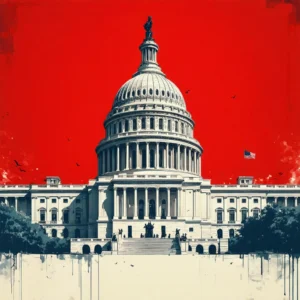
Introduction: A Period of Change in Legal Regulatory Leadership
The recent announcement regarding the retirement of SRA Chief Executive Paul Philip has set the stage for a period of significant transition within the legal regulatory community. Importantly, Paul Philip has clearly stated that his decision to step down was made independently of the Axiom Ince controversy – a scandal that has received extensive coverage in recent times. This decisive clarification has helped dispel any notions that the retirement was linked to the unfolding events related to Axiom Ince.
Context and Background
In an era marked by rapidly evolving business practices and unpredictable market dynamics, the leadership changes within regulatory bodies such as the SRA (Solicitors Regulation Authority) and the BSB (Bar Standards Board) are of keen interest to legal practitioners, policymakers, and business leaders alike. The departure of key figures from these regulatory organizations stimulates debates about future governance models, crisis management strategies, and the robust maintenance of professional standards in the face of emerging challenges. Leading this dialogue is the recent statement by Paul Philip, whose retirement plan predates any association with the Axiom Ince matter.
Clarifying the Timing of the Retirement Decision
Paul Philip’s unequivocal assertion about the independence of his retirement decision has been pivotal in reassuring stakeholders. The timeline indicates that:
- The retirement plan was a long-considered, strategic decision by Paul Philip.
- Discussions regarding his departure had been ongoing well before the Axiom Ince issue surfaced.
- Regulatory reforms and shifts in organizational governance had already paved the way for a planned transition in leadership.
This positioning serves to stabilize the current regulatory environment by immediately addressing potential concerns about a direct link between leadership churn and external controversies. It offers a much-needed moment of reflection and reassurance for both the legal community and the previous partners affiliated with these venerable institutions.
Leadership Transition and Strategic Implications for the Future
The strategic landscape of regulatory bodies is invariably influenced by leadership decisions. With the retirement of Paul Philip – alongside the step down of the BSB chair – an important chapter in regulatory governance is coming to a close. The current transitions highlight several pivotal areas:
- Continuity in Governance: The departure of established leaders poses challenging questions about how continuity in regulatory oversight will be maintained. Stakeholders expect that new appointments will bring fresh insights while upholding the core values and mission of these organizations.
- Adapting to Change: The legal sector is facing continuous evolution. New leadership must manage the delicate balance between preserving successful regulatory frameworks and integrating modern, efficient practices to meet the demands of a globalized market.
- Strategic Realignment: The planned departures allow for a reassessment of existing strategies, potentially leading to enhanced transparency, updated guidelines, and more dynamic operational models.
Implications for the Legal and Business Communities
This period of transition presents a unique window of opportunity for both legal and business communities. The upcoming changes have the potential to spur innovation and foster a culture of robust governance. Notably, several key points emerge:
- Investor Confidence: Assurance regarding the independence of retirement decisions is crucial for maintaining trust among investors and partners. Stakeholders are reassured by the clarity of the message that leadership changes, in this case, are strategic rather than reactive to scandals.
- Market Stability: Consistent and well-thought-out leadership transitions help stabilize the business environment, as industries connected to the legal sector often rely on transparent regulatory systems.
- Enhanced Regulatory Frameworks: With new leadership likely to bring diverse perspectives, there is significant potential for reforms that address both internal operational issues and external market challenges.
Addressing Concerns: Separating Personal Decisions from Regulatory Scandals
It is imperative to address the misconceptions that have inadvertently linked Paul Philip’s retirement to broader organizational scandals. Clear communication has been central in asserting that:
| Aspect | Description |
|---|---|
| Timing | The retirement decision was initiated before any discussions or revelations regarding the Axiom Ince scandal. |
| Motivation | The leadership transition was based on strategic goals for improving regulatory oversight and clean governance reforms. |
| Impact | This separation of timelines minimizes the risk of perceived conflicts of interest or nepotism, thus maintaining market integrity. |
Such transparent communication practices are essential in preserving the integrity of regulatory institutions. They serve as a model for managing public relations during leadership upheavals by focusing on long-term strategic objectives rather than temporary controversies.
Moving Forward: Strategic Recommendations for Transition Planning
In light of these recent events, industry observers and analysts have suggested several strategic recommendations to ensure smooth transitions:
- Develop and implement a comprehensive transition plan that allows for overlap between outgoing and incoming leadership to ensure continuity.
- Conduct stakeholder briefings to address potential concerns and maintain investor and partner confidence during the handover period.
- Focus on long-term strategic planning that reinforces internal policies and aligns regulatory activities with emerging market demands.
- Foster collaborative decision-making processes that include input from various sectors of the legal community to build consensus on future directions.
Implementing these recommendations may not only reinforce the resilience of the legal regulatory framework, but also serve as best practice guidelines for similar organizations facing leadership challenges.
Conclusion: Clear Vision Amidst Change
The retirement announcement by Paul Philip, along with changes at the BSB, marks a turning point for leadership in the legal regulatory sector. With a firm emphasis on the fact that the retirement plan was established long before any issues involving Axiom Ince came to light, stakeholders can rest assured that the transition is anchored in strategic foresight rather than crisis management. This approach reflects a broader commitment to maintaining the integrity and effectiveness of regulatory bodies, ensuring that future challenges are met with a clear, cohesive, and transparent governance structure.
The coming months will undoubtedly provide insights into how these leadership changes reshape the regulatory landscape. Business leaders, investors, and legal professionals alike will be monitoring these developments closely, fully aware that the clarity provided by Paul Philip’s announcement signals a proactive approach. As the sector evolves and new leadership takes the helm, there is cautious optimism about the opportunities for revitalization and enhanced governance within the industry.
By embracing change while preserving core values, regulatory bodies are well-positioned to guide the legal community through complex market dynamics. This balanced approach will likely lead to the development of more effective regulatory strategies and stronger partnerships, sustaining the trust that the legal sector relies on to function effectively in a rapidly changing business environment.




